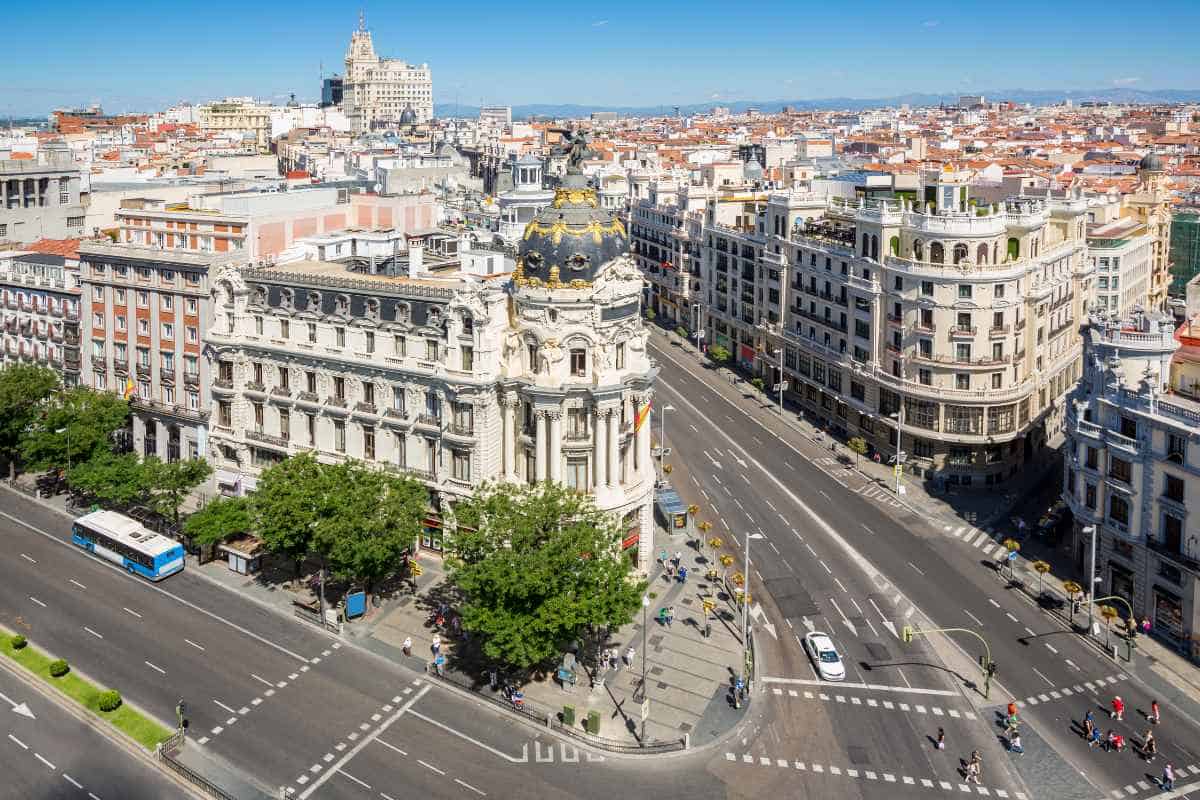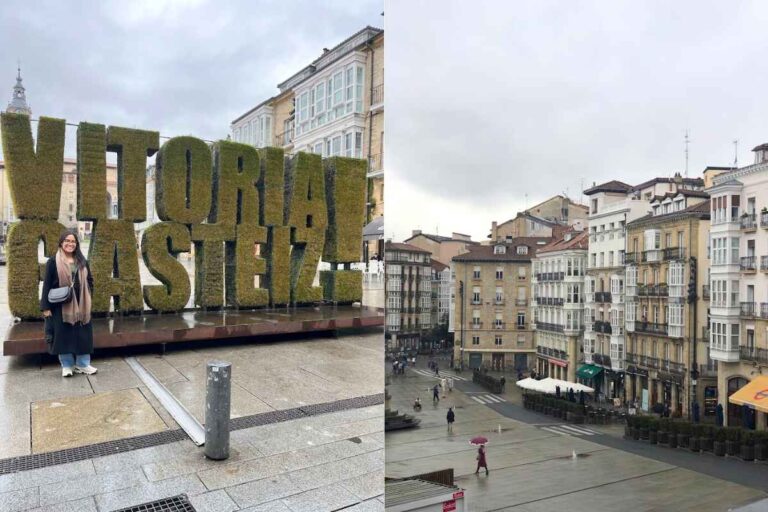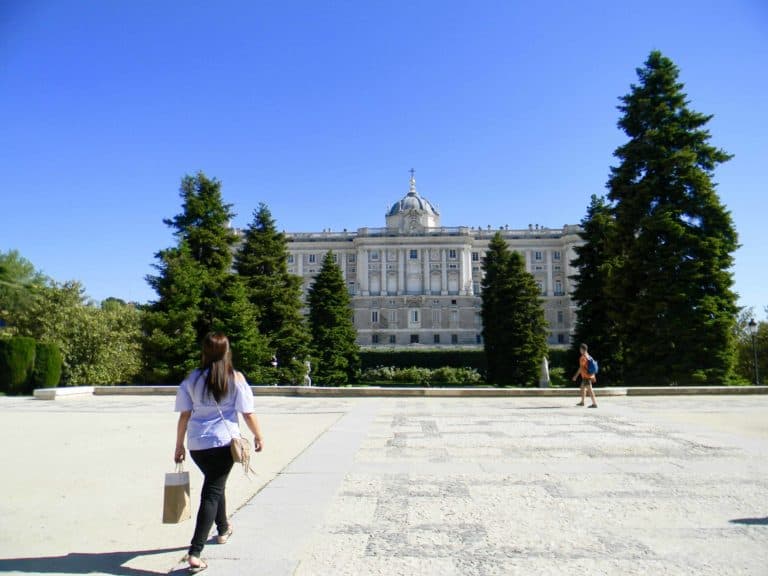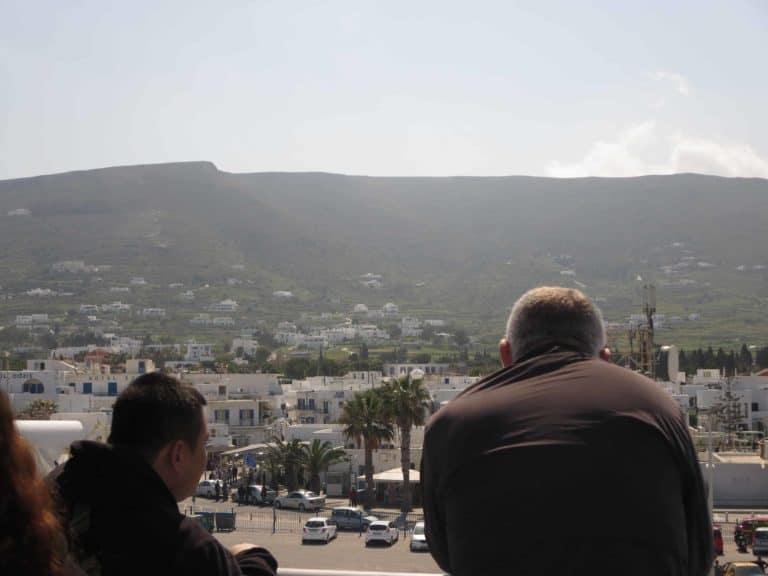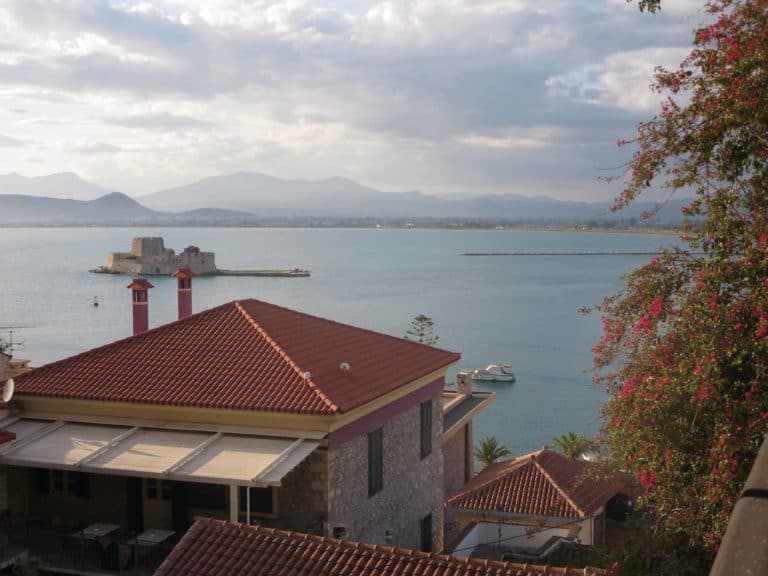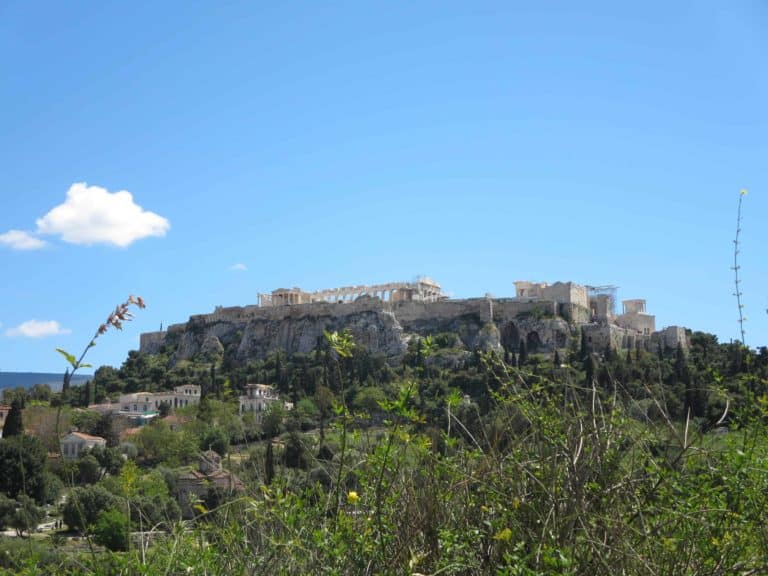9 Culture Shocks in Spain I Experienced as a Mexican-American in Madrid + Practical Tips
Are you curious about the culture shocks in Spain you might encounter when moving to Madrid?
Settling into this vibrant Spanish city presents unique challenges that can surprise even the most seasoned travelers.
Whether you’re relocating to teach, study, or even just stopping by for a few days on your Euro trip, knowing what to expect when it comes to some of the most popular cultural differences will be helpful for a smooth experience in Madrid.
Drawing from my personal journey as a Mexican-American adapting to Madrid when I moved there to teach English, this post not only highlights potential culture shocks but also offers practical strategies to help you understand and overcome these potential cultural differences.
I want to share 9 unexpected culture shocks that surprised me as a Mexican-American moving to Madrid, from the straightforwardness of Spanish people to the way they talk about the conquest.
Ready to learn more? Let’s jump in!
9 Culture Shocks in Spain I Experienced as a Mexican-American in Madrid + Practical Tips
1. Language differences and social customs in Spain
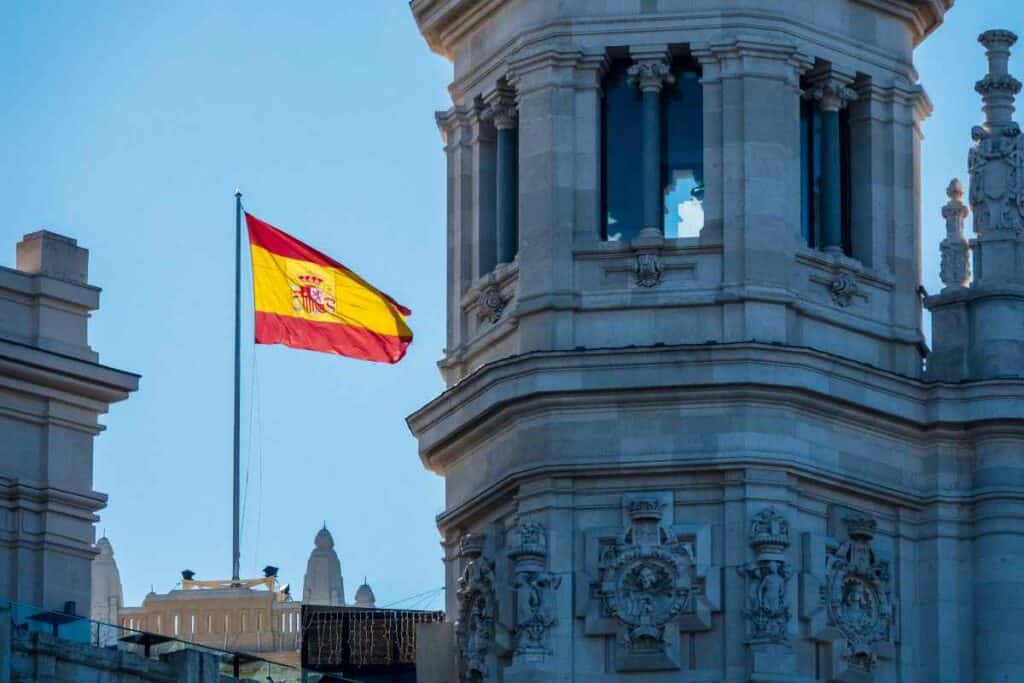
Even if you grew up in a household where Spanish was spoken and family values were similar to those in Spain, you’ll see that life in Madrid has its learning curve, even for those of us with Spanish as our first language.
It’s easy to assume that sharing a language and cultural background would simplify your transition. However, the reality is that there’s more to it.
In Madrid, everything from the differences in accents, Spanish slang words, and talking styles might surprise you.
Words you thought you knew can have new meanings, and the speed at which locals talk might be faster than what you’re used to.
Here’s how you can better adapt to these cultural differences:
- Listen actively: Engage fully in conversations, paying close attention to local expressions and the context in which they are used.
- Ask questions: Don’t hesitate to ask for clarification when you hear certain words or expressions you’re not aware of. Most locals will happily explain if you ask with genuine curiosity, as it shows your respect and willingness to learn.
- Be patient with yourself: Allow yourself time to adjust. Learning and adapting to a new culture is a gradual process, and making mistakes along the way is okay!
Understanding and embracing these differences will surely improve your experience in Spain. Plus, it’s part of travel and learning about different cultures.
My best advice is to approach each challenge as an opportunity to learn and integrate deeper into your new environment.
Engage with the local community, share your experiences, and you may even end up making friends in Madrid.
>> Read More: 7 Specific Things I Wish I Knew About Moving To Madrid, Spain
2. Spanish bluntness
Spaniards don’t beat around the bush when it comes to communication, and that can be quite a culture shock, especially if you come from a Mexican or broader Latin American background where politeness and careful choice of words are deeply ingrained.
Spaniards tend to say exactly what they think and feel without the layers of politeness common in Latin American contexts.
This isn’t a sign of rudeness or dislike; it’s a cultural norm that values straightforwardness and efficient communication.
Though there’s nothing wrong with straightforwardness, I think many of us, specifically from Latin American cultures, including Mexico, can experience a culture shock as we are taught to place a strong emphasis on speaking respectfully and carefully, often going to great lengths to avoid causing any offense.
However, in Spain, the communication style is more direct.
Here are a few tips to navigate Spanish directness:
- Expect direct responses: Prepare yourself for direct answers without elaboration. Understanding that this is the norm can help reduce the shock and potential misunderstandings.
- Don’t take it personally: Realize that when a Spaniard is direct, it isn’t an attack on your actions or you. It’s simply their way of communicating.
- Respond the way the locals do: When talking with a local, respond openly and don’t hesitate to engage in the same directness. This can be an opportunity to express yourself clearly and effectively.
- Appreciate the clarity: Direct communication can often lead to faster resolutions and clearer understandings. Try to see the efficiency and honesty in this communication style.
- Cultural reflection: Consider how historical and social differences shape communication styles. Why is it that in Latin America, we are ingrained in talking a certain way, and in Spain, it’s very different?
Details like this not only teach you about local customs but also provoke deeper meanings about differences between cultures that are otherwise very similar in other ways, including language.
Plus, you’ll learn to engage more confidently and comfortably in conversations with locals.
3. Spaniards and physical touch
One of the more interesting culture shocks you might experience in Spain is the norm of close physical contact.
Spaniards often greet each other with kisses on both cheeks, and it’s common to stand at a closer physical distance than many are accustomed to in other cultures when having a casual conversation.
This can be surprising to visitors who are not used to such familiarity in casual interactions. Even coming from a Mexican-American background, it took me a while to be comfortable with this culture shock!
In Spain, physical contact is not just a way of greeting but a way to express friendliness.
The greeting is usually two kisses (one on each cheek) and this is typical among friends and family, work colleagues, and even a few strangers if you’re meeting new people. Based on experience, hugs are not really a form of greeting people, and neither are handshakes, unless you’re in a professional setting.
💡 Pro tip: When greeting with two kisses, you’re not actually kissing the person, but rather, you’re just touching cheeks and making the kiss sound. So, to avoid any embarrassing mishaps, keep this in mind!
4. Later meal time in Spain

Another surprising culture shock in Spain is the time they eat.
In Spain, lunch often doesn’t start until around 2 to 3 PM, and dinner can be as late as 9 to 10 PM.
This schedule is quite a shift from the typical meal times in many countries including the U.S. and Mexico, and it can take some getting used to.
Why do Spaniards eat so late? Historically, because of the hot weather, specifically in Andalucia, meal times were placed throughout the day based on the heat to avoid certain hours of the day when the sun was the most intense. Midday heat was the worst, so dinner time was pushed later until it the sunlight weakened, and people could prepare dinner and enjoy more comfortably.
Practical Tips for Adjusting to Late Meals:
- Start to slowly adapt your hunger: If you’re used to eating earlier, try gradually pushing back your meal times by 30 minutes every few days to slowly acclimate to the local dinner time.
- Get a midday snack: Get your ‘merienda,’ a small afternoon snack typical in Spain, into your routine around 5 or 6 PM. This can help bridge the gap between lunch and dinner. A merienda is typically something light like like a piece of fruit, a small sandwich, or a pastry.
- Plan your day accordingly: Adjust your daily schedule to align better with local eating times.
- Embrace the local lifestyle: Use the late dinners as an opportunity to engage more fully with Spanish culture. Evening meals are often social affairs, so enjoy this time to relax and connect with friends over good food.
- Stay hydrated and well-rested: Eating at a different time can sometimes throw off your body’s natural rhythms. A way to help this transition is to make sure to stay hydrated throughout the day and maintain a consistent sleep schedule to help your body adjust.
5. Siesta time
Another interesting culture shock in Spanish culture is the traditional “siesta” time.
A siesta is basically midday break, where businesses shut down, and people take a break from their work to rest, eat, or spend time with family.
While siesta is more prevalent in smaller towns, don’t be surprised to find that in larger cities like Madrid or Barcelona, many smaller shops still close for a few hours in the afternoon, and many are closed on Sundays.
The siesta typically goes from around 2 pm to 5 pm. Very similar to the late meal times, the siesta aligns with the hottest part of the day, because historically, it was a break from the intense heat.
Practical tips for managing during siesta time
- Plan your shopping: Check when businesses open and close beforehand, especially if you need to visit smaller, local shops. Plan your shopping in the morning or late afternoon to avoid any unexpected closures.
- Relax for a bit: If you’re living in Spain, join in on this tradition and use this time to unwind, read, or even take a short nap. It can significantly boost your energy levels for the evening.
- Explore without crowds: On the other hand, if you’re visiting, siesta time can be an ideal time to visit popular sites that remain open throughout the day, with fewer crowds.
- Prepare for Sunday closures: Since some businesses and shops close on Sundays, plan your essential activities and purchases on other days. Though you may not be able to shop at some shops on Sunday, you can still visit parks, visit museums, or enjoy a long brunch.
6. Relaxed pace of life in Spain

In Madrid, as in much of Spain, life seems to move at a slower pace.
Whether it’s the waiter at the restaurant not pushing the check in your face as soon as they collect your plates, or the city being quiet on the weekends until after 12, the relaxed lifestyle is almost one of the first things we notice when visiting Spain.
Even in big cities like Madrid, you’ll notice people taking time for long lunches, enjoying leisurely coffees at cafés, or simply soaking in the life at the park without rush.
It’s such a breath of fresh air, but depending on what your activites include, it can sometimes be a bit stressful if you have a tight deadline, or only a few days to explore the city.
Here are a few tips for adapting to the slower pace:
- Adjust your schedule: Be aware of the times when locals do certain things, and try to sync your schedule with them; for example, lunch is around 2-3 pm, and dinner is not before 9 pm.
- Learn to go at a slower pace: ‘Sobremesa,’ is where Spaniards linger at the table after meals to chat over coffee or a drink. This practice is not just about enjoying food but also about enjoying the company and conversation.
- Plan for siestas and late nights: Some shops and businesses might close in the afternoon for a siesta and reopen later in the day, so plan your errands accordingly. Similarly, social and cultural activities often start later in the evening, so schedule your daily activities and sleep schedule so you can also participate in local activities.
- Be flexible: Deadlines and appointments are sometimes just seen as “suggestions” depending on the context. While punctuality is still important, there’s often a more flexible attitude towards time, so patience is key.
- Enjoy the leisurely weekends: Weekends in Madrid for example are a prime time to experience this relaxed pace. Markets, parks, historic sights, and plazas become lively centers of leisure activity, so take advantage but go with the flow.
7. The smoking culture in Spain

In Spain, smoking is widely accepted in many outdoor public areas and some designated indoor spaces.
You’ll often see people smoking on terraces, outside bars, and even while walking down the street. This openness can be a bit of a shock initially, especially if you come from the States, where smoking in public places is generally not allowed.
This wasn’t too much of a shock especially after I studied abroad in Greece, where I experience the smoking culture initially, but it still something if you’re not used to, can come as a shock.
Practical tips for navigating smoking culture:
- Sitting outdoors: When dining out, remember that outdoor seating can mean exposure to smoke. If this is a concern, opt for indoor seating where smoking is not allowed.
- Cultural sensitivity: While you may not appreciate the smell of smoke, it’s important to note that smoking is something that’s very common in Spain, so you still have to approach it in a sensitive manner. Because smoking is common in many social interactions in Spain, showing frustration or disgust openly can be seen as rude.
- Residential rules: If renting or staying in a hostel or hotel, ask about the smoking policy. Many places accommodate non-smokers, but it’s best to confirm this if this is a concern for you.
8. Madrid’s shopping scene is amazing

Maybe it was just me, but I wasn’t expecting the shopping scene to be as great as it was in Madrid.
If shopping is your thing, you’ll definitely appreciate the variety of stores and brands that may not be available in the States.
From popular chains like Parfois, Sfera, and Stradivarius to unique local boutiques shops, Madrid offers a great offering of fashion choices for pretty much any style.
The styles, colors, and cuts you’ll find here are different and beautiful, which offers fresh inspiration to kick up your personal style. Especially seeing it on the streets on so many stylish locals.
Here’s how you can make the most of Madrid’s shopping scene:
- Explore beyond mainstream stores: Venture into smaller, local boutiques to find one-of-a-kind items for true, local Spanish style.
- Get inspired by the local style: Don’t be afraid to experiment with local trends and styles to expand your fashion sense. Even if you’re just browsing, observing the fashion can give you new ideas for your own wardrobe.
- Take advantage of public transport: Use Madrid’s amazing public transport to easily move to different shopping districts, making your shopping spree more enjoyable and less stressful.
>> Read More: 12 Stores That Make Madrid a Top Shopping Destination
9. Talking about the conquest with Spaniards

As a Mexican-American in Spain, talking about the historical conquest can seem a bit daunting.
This topic is emotionally and historically charged, carrying different meanings in Spain and Mexico.
It’s important to recognize that Spain and Mexico have evolved into strong allies with significant migration between the two countries, which has enriched both cultures.
But, still, Spaniards, like Mexicans, have their narratives shaped by what is taught in each country.
In Spain, figures like Columbus and Cortes are often seen from a perspective of exploration and national pride, which extremely contrasts with the views we have as people of Mexican decent and can come as a culture shock to see statues of these characters throughout Spain.
Though this isn’t a huge issue that’s causing problems today, the subject tends to come up in coversation because of so many similarities between Mexico and Spain that come to mind simply when you walk through the historic streets of Madrid.
From the architecture, to some sayings that some Spanish people say that we heard our (Mexican) grandparents say, names of streets, and so much more.
In my experience, when the topic comes up, I’ve used it to share our side of the story, while listening to how they’ve interpreted the same event. Spaniards don’t shy away from discussing the topic, which makes it interesting to hear their “side of the story”.
At the end of the day, the Spaniards I’ve talked with do recognize that the acts of their ancestors was atrocious, but they also highlight the ways in which both countries, Mexico and Spain, share so many similarities, and how they’ve both become enriched.
Despite it being a bit of a difficult topic to talk about, generally speaking I’ve had positive experiences with Spaniards. While our histories may differ, our present interactions can still be based on respect.
Practical tips for navigating historical discussions:
- Listen first: Understand the context in which historical figures or events are mentioned.
- Educate courteously: Share your perspective without being defensive.
>> Read More: Being Mexican American: “Where Are You From?” – Ni De Aquí Ni De Allá
Concluding thoughts on the 9 culture shocks I experienced moving to Madrid, Spain as a Mexican-American
Have you moved to Madrid before? What did you like the most about the city?
I would love to know more about your time in the Spanish capital, and what life was like for you abroad. Whether you taught English abroad like me, or you studied abroad or were an Au Pair or anything – how did you like Madrid, and what do you like most about it?
Let me know in the comments!
If you identify as Mexican-American, and you’re planning a move to Madrid, or you simply want to visit but have curiosity as to what it may be like because, well, history – I got you!
I was there, and I am still learning about the history, and how we can grow from it.
I hope this post helped you clarify your plans to visit Spain and see it for yourself – it’s truly a beautiful country.
And remember, it’s all a learning experience, and the best way to grasp it all is to see it yourself.
To more travel moments like these,

Like it? Pin it!


